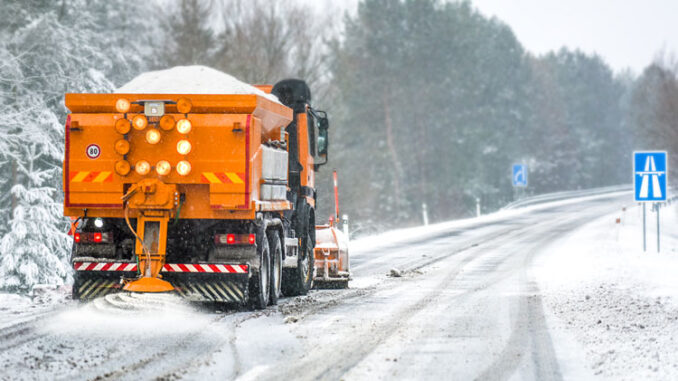
In places where winter weather can become a hazard, salt trucks are a common sight this time of year. These trucks apply salt before, during, and after winter storms that dump snow and ice onto the roads. You may have seen people apply salt to icy or snowy sidewalks and driveways as well. Is it the same salt we put on our food, and how does it work?
The salt most often used on roads is similar to the type we use on our food. Like table salt, it is sodium chloride; however, it has not been purified, so it may be a different color.
Salt makes the roads safer by helping to melt the snow and ice. Snow and ice can be slippery. When salt mixes with water, it lowers its freezing point [the temperature at which a liquid changes into a solid]. This is called freezing point depression. Salt lowers the freezing point by making it harder for water particles to form ice crystals.
The freezing point of pure water is 32° F (0° C). Saltwater freezes at a lower temperature. And the more salt, the lower the freezing point. This means that lots of salt gets spread on our roadways.
Though salt works well to keep our roads safe, there are negative consequences of using salt. Salt from the roads can drain into rivers and lakes and harm plants and animals. In addition, salt is corrosive [able to cause harm as a result of chemical reactions] and can damage cars and roadways. Researchers are studying less harmful alternatives to road salt.
What Can You Do? Sprinkle table salt onto an ice cube. Observe and explain what happens. (Hint: Adding a drop or two of food coloring will make observation easier.)
Photo Credit: Krasula/Shutterstock



